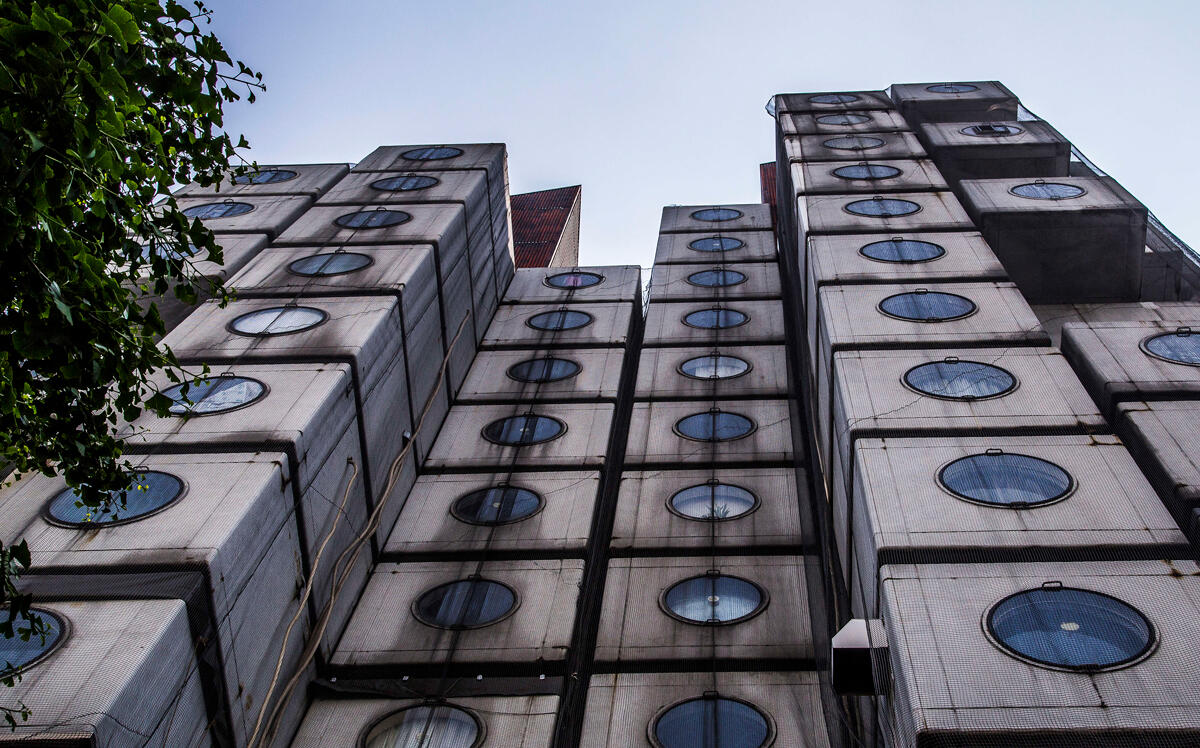A celebrated mixed-use residential and office tower in downtown Toyko that famously rented out tiny, replaceable cubes to its customers is being demolished — but its renowned capsules could be finding their way to a museum near you.
The Associated Press is reporting that the landmark Nakagin Capsule Tower, which is made up of boxes stacked on top of each other, is in the process of being carefully dismantled, with some of its prefabricated rooms shipped out to be put on display in the coming weeks.
Designed by architect Kisho Kurokawa and completed in 1972, the building consists of two interconnected concrete towers — one 11 and one 13 stories — housing 140 living or office space units measuring 8.2 feet by 13.1 feet with a circular window about one yard in diameter.
Conceived as a way to easily replace portions of the building with new, prefabricated capsules, none of the original units were ever removed.
The capsules themselves had appliances and shelves built into the walls and a hidden desk that could pop out of one section. The units could also be equipped with some for-the-time state-of-the-art electronics, such as a Sony reel-to-reel tape recorder.
The building had fallen into disrepair, and only 30 of the 140 capsules had been rented in recent years.
Renters tended to be creative types such as musicians, filmmakers and architects who didn’t use the space as a place to get work done.
“The view from that round window felt so good,” Tatsuyuki Maeda, who had been using a pod as a second home since 2010, told the AP. “At night, when cars sped by, their lights on the nearby freeway were pretty. And the cityscape was beautiful.”
The building was sold to developers in 2021 with the intention of knocking it down, and while attempts to save the building have failed, many of the units will be saved.
The preservation project will ship some for real-life living in separate locales, and those in museums will be refinished by the Kurokawa architectural office.
Kurokawa died in 2007 at the age of 73.
[Associated Press] — Vince DiMiceli
